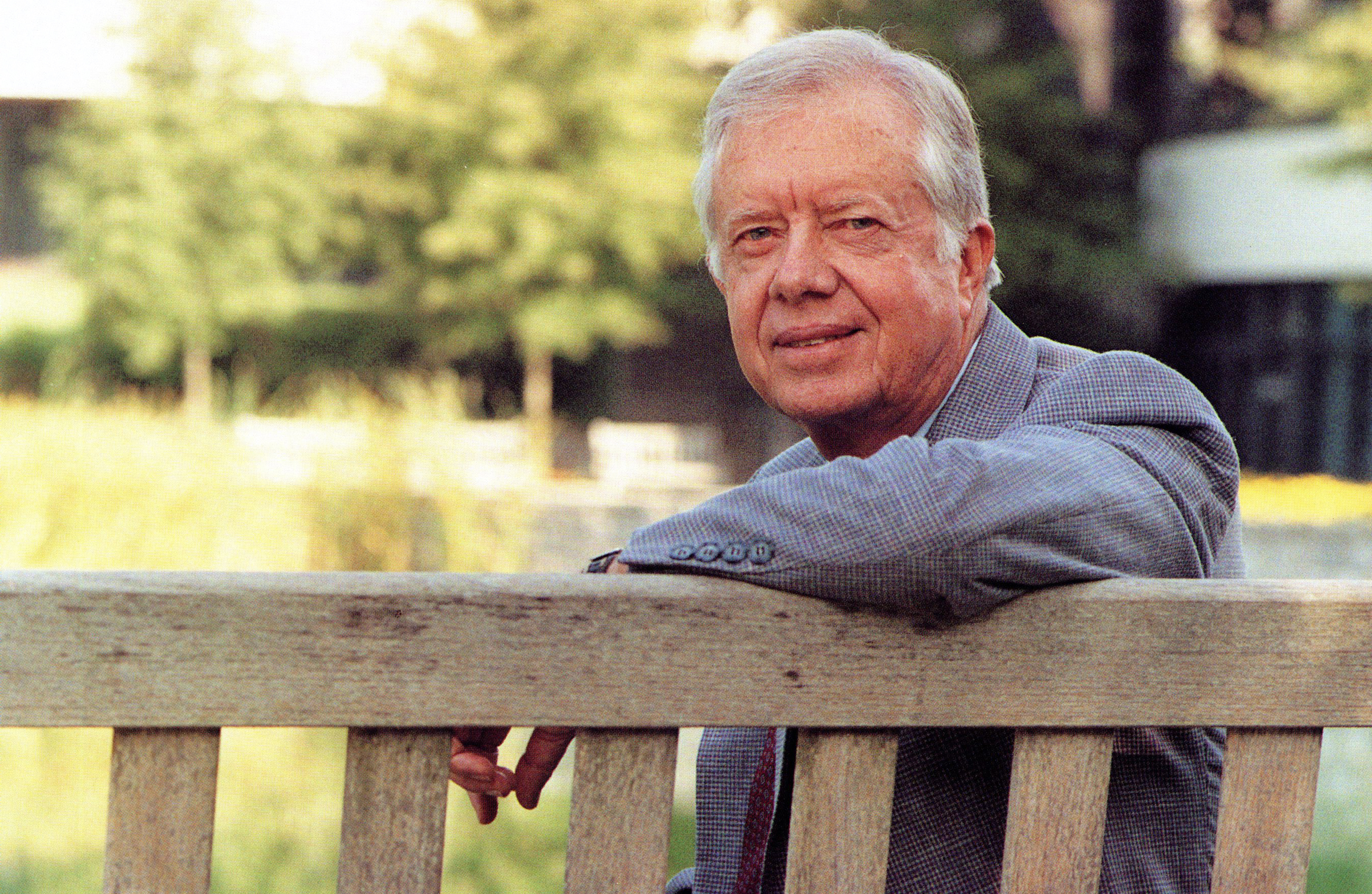Breaking News: President Jimmy Carter hospitalized-UPDATED

Former President Jimmy Carter has been hospitalized in Cleveland. The Delta Airlines flight the 85 yr. old president was on had contacted the flight control tower that they had an ill passenger on board the flight. The plane was met by paramedics who took Mr. Carter by ambulance to Metro Health Hospital, the closest hospital to the airport, and a level 3 trauma center. Initial reports as to the President’s condition were not known, however Carter Center spokeswoman Deanna Congileo later released a statement : “While on a flight to Cleveland, former U.S. President Jimmy Carter developed an upset stomach, and, upon arrival, was taken to Metro Health Hospital for observation. He is resting comfortably and is expected to resume his book tour this week.”
Carter has been making the morning news and talk show rounds to promote his new book, White House Diary, and was in Cleveland to do a bookstore appearance. As “upset stomach” is a pretty nonspecific malady, we will update this blog if more specific information becomes available.
UPDATE: Wednesday September 29, 2010
Seems that President Jimmy Carter’s “health scare” may have been a case of airsickness!
Christina Karas, a spokeswoman at MetroHealth Medical Center, reported that “President Carter is feeling normal this morning, … [he] is in very good spirits, appreciates all the good wishes being sent his way, and looks forward to getting back to his busy schedule. ” However, she added that “His doctors at MetroHealth Medical Center recommended additional observation during the day.”
Whether the 85 year old former president had air sickness (or motion sickness) or not, this gives us the opportunity to talk about the malady which is estimated to affect 80% of people at some time in their life.
What gives us our sense of balance?
Your sense of balance is maintained by a complex interaction of the following parts of the nervous system:
- The part of the inner ears, called the semicircular canals, which monitor the directions of motion, such as turning, rolling, forward-backward, side-to-side, and up-and-down motions.
- The eyes, which monitor where the body is in space (i.e., upside down, right side up, etc.) and also directions of motion.
- The skin pressure receptors (proprioceptors) in the joints and spine, which tell what part of the body is down and touching the ground.
- The muscle and joint sensory receptors (also proprioceptors), which tell what parts of the body are moving.
- The central nervous system (the brain and spinal cord), which processes all the bits of information from the four other systems to make some coordinated sense out of it all.
Motion sickness occurs when there is a conflict between the various senses in regard to motion. When signals received by the eyes or the proprioceptors do not match those being transmitted by the inner ear, motion sickness occurs. It can occur in either the presence or absence of actual motion, such as when viewing a slide through a microscope or with video games or movies. Symptoms include nausea, vomiting, pallor, sweating, and often a sense of impending doom. Motion sickness is likely to occur when there is movement simultaneously in multiple planes, such as on amusement rides, on board ships, or during air travel.
Preventive Measures for Travelers (Source: Centers for Disease Control)
- Being aware of those situations which tend to trigger symptoms.
- Optimizing positioning—Driving a vehicle instead of riding in it, as well as sitting in the front seat of a car or bus, sitting over the wing of an aircraft or being in the central cabin on a ship can help reduce symptoms.
- Eating or drinking—Eating before the onset of symptoms may hasten gastric emptying, but in some individuals, can aggravate motion sickness. Drinking caffeinated beverages along with taking one of the medications suggested can help manage motion sickness.
- Reducing sensory input—The reduction of aggravating stimuli (e.g., lying prone, looking at the horizon, or shutting eyes) can help alleviate symptoms.
- Adding distractions—Aromatherapy using mint, lavender, or ginger (oral) helps some; flavored lozenges may help as well. They may function as placebos or, in the case of oral ginger, may hasten gastric emptying.
- Using acupressure or magnets—Advocated by some to prevent or treat nausea (not specifically for motion sickness), although scientific data are lacking.
Antihistamines, such as Dramamine, or Bonine are the most common medications used for motion sickness. However, many of these medications also cause the side effect of drowsiness (which may be part of the reason why it works). This would not be appropriate for some people, such as drivers, machine operators or pilots. Contact your physician if your symptoms do not respond to OTC medications or if symptoms become worse (more severe, more frequent).
As an aside: In researching this topic I came across a website which shows that people can be interested in almost anything. Click here to go to the Online Air Sickness Bag Museum.
























0 comments